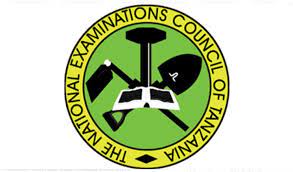FORM FIVE SELECTIONS 2021** FORM 5 JOINING INSTRUCTIONS
Get Help To Apply for University and Loans
Form Five Selection 2022, Wanafunzi waliochaguliwa kidato cha tano 2022, How to check Form five selection 2022. This article contain all information about TAMSEMI Form five selection and all you need to know about F5 selection for academic year 2022/2023(Form Five Selection 2022/2023)
About TAMISEMI, The establishment of the Ministry of Regional Administration and Local Government (TAMISEMI) is enshrined in the Constitution of the United Republic of Tanzania Article 8 (1) 145 and 146 of 1977 and many other amendments thereafter.
In 1982 under the Parliament of the United Republic of Tanzania passed the Local Government Authorities Act No. 7 (Cap 287) and the Urban Authorities Act No. 8 (Cap 288). The two laws empowered the Minister responsible for Regional and Local Government Administration on the establishment of District, Village, Small Town, and Local Government Authorities.
The role of TAMISEMI is to coordinate and supervise regional development management and administration. TAMISEMI coordinates rural and urban development management policy and strategies; coordinates Regional Secretariats activities and builds their capacity in institutional development strategies for integrated socioeconomic development and financial.
Form Five Selection 2022
Many students are exited to know when TAMISEMI Will announce students selected to join Form five 2022. Parents and form four leavers who passed form four examination 2021 are so exited to know where and when they will join Form five studies. This article will help you to know each and every thing.
What is Form Five Selection 2022
Candidates who sat for the 2021 Form Four national exams are selected to Join form five Selection 2021. Form five Selection 2022 are always released by TAMISEMI. The role of TAMISEMI is to coordinate and supervise regional development management and administration. TAMISEMI coordinates rural and urban development management policy and strategies; coordinates Regional Secretariats activities and builds their capacity in institutional development strategies for integrated socioeconomic development and financial development of Local Government Authorities.
How to check TAMISEMI Form Five Selection 2022
- Step 1. Visit the official website of TAMISEMI http://selform.tamisemi.go.tz
- Step 2. Click on the official link of Selection Results
- Step 3. Candidates can find the Selection Results by scrolling down the page
- Step 4. Check your name from the list that will be presented in online mode.
- Step 5. Candidates may download and print out multiple copies of the list for any future references.
Form five selection by Region
| ARUSHA | DAR ES SALAAM | DODOMA |
| GEITA | IRINGA | KAGERA |
| KATAVI | KIGOMA | KILIMANJARO |
| LINDI | MANYARA | MARA |
| MBEYA | MOROGORO | MTWARA |
| MWANZA | NJOMBE | PWANI |
| RUKWA | RUVUMA | SHINYANGA |
| SIMIYU | SINGIDA | SONGWE |
| TABORA | TANGA |
Tanzania Education
The history of Education in Mainland Tanzania is divided into two parts which are before and after independence. Before the arrival of foreigners on the shores of Tanganyika, each tribe had its own system of traditional education. Traditional education was based on the daily routines of multi-ethnic communities.
This education which included knowledge, skills, values, culture, techniques and procedures to work and protect themselves from the scourges of famine, disease and enemies of social security and their property was passed down from one generation to the next. Learning materials were shared and distributed by adults at home, at work and in other areas of life. This system began to change in its goals and delivery since the colonists invaded the country.
Colonial Education: The first foreigners in mainland Tanzania were Arabs, followed by the Portuguese, Germans and British. As the delegates exchanged power for part of the country or the whole country, each group changed the education system according to their wishes regardless of what was best for Mainland Tanzanians. National schools vary in the goals, curricula, qualifications and professions of teachers, the language of instruction, and the quality of school buildings and teachers’ houses.

.jpg)




0 Comments